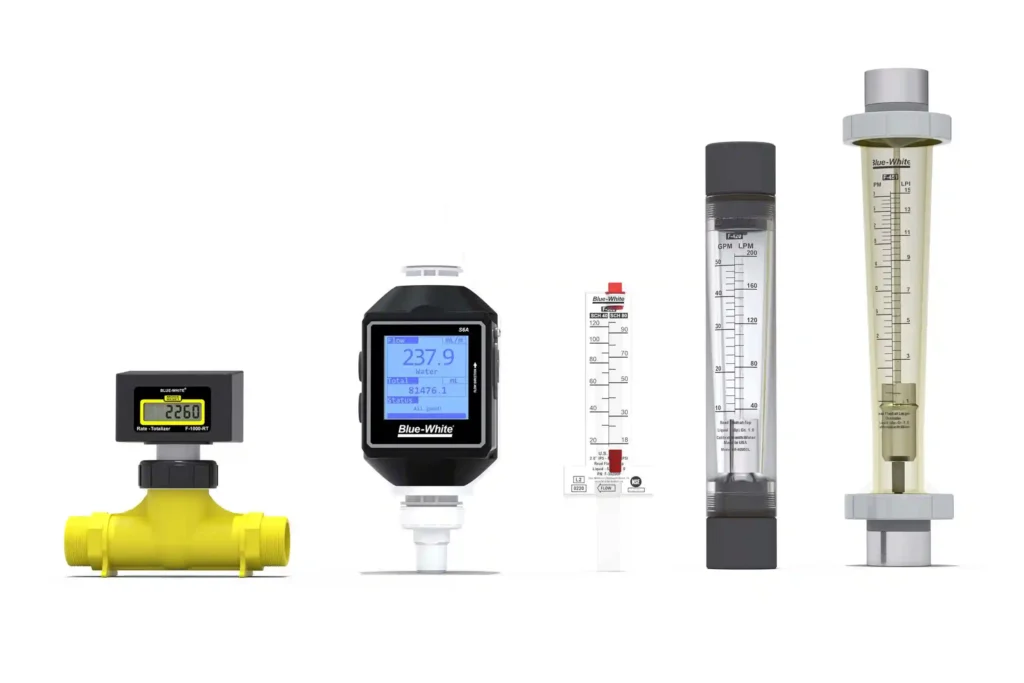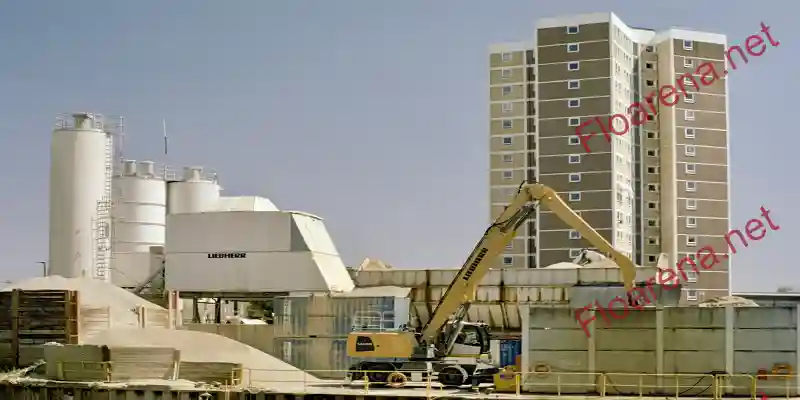Flow control means managing liquids and gases in factories. It helps move materials from one place to another. Companies use pipes, valves, and pumps for this work. Optimizing flow control in process industries also save money and keeps workers safe.
Many industries need flow control systems. Oil refineries use them. Chemical plants depend on them. Food factories need them too. Water treatment plants cannot work without them.
Why Flow Control Matters

Poor flow control causes problems. Machines break down more often. Energy costs go up. Products may not meet quality standards. Safety risks increase for workers.
Good flow control brings benefits:
- Lower energy bills
- Better product quality
- Fewer machine breakdowns
- Safer working conditions
- Less waste production
- Higher profits for companies
Types of Flow Control Equipment
Basic Control Valves
Control valves are the heart of flow systems. They open and close to control flow rates. Different types work for different jobs.
Gate Valves
- Used for on-off control
- Work well with thick liquids
- Last a long time
- Need little maintenance
- Cost less than other types
Globe Valves
- Good for fine control
- Work with high pressure
- Easy to repair
- Control flow precisely
- Used in many industries
Ball Valves
- Quick to open and close
- Work with dirty liquids
- Very reliable
- Easy to operate
- Popular choice for many uses
Butterfly Valves
- Good for large pipes
- Take up little space
- Cost less to buy
- Easy to install
- Work well with clean liquids
Flow Measurement Tools

Measuring flow is important. Companies need to know how much material moves through pipes. Different tools work for different situations.
Orifice Plates
- Simple and cheap
- Work with clean liquids
- Easy to install
- Need regular checks
- Good for steady flows
Turbine Meters
- Very accurate
- Work with many liquids
- Give instant readings
- Need clean liquids
- Popular in oil industry
Ultrasonic Meters
- Do not touch the liquid
- Work through pipe walls
- Need no maintenance
- Cost more to buy
- Good for dirty liquids
Magnetic Meters
- Very accurate
- Work with dirty water
- Last a long time
- Need conductive liquids
- Popular in water plants
Control Systems
Modern flow control uses computers. These systems make decisions automatically. They respond faster than human operators.
Basic Controllers
- Simple on-off control
- Low cost option
- Easy to understand
- Good for basic needs
- Reliable operation
PID Controllers
- More advanced control
- Better performance
- Smooth operation
- Widely used
- Need more setup
Computer Systems
- Handle many loops
- Store data
- Make reports
- Connect to networks
- Most flexible option
Benefits of Optimizing Flow Control in Process Industries
Cost Savings
Good flow control cuts costs in many ways. Energy bills drop when pumps work efficiently. Less waste means lower material costs. Fewer breakdowns reduce repair bills.
Energy Savings
- Pumps use less power
- Motors run at best speed
- Heating costs drop
- Cooling needs reduce
- Overall efficiency improves
Material Savings
- Less product waste
- Better yield rates
- Fewer rejected batches
- Lower raw material costs
- Better inventory control
Maintenance Savings
- Equipment lasts longer
- Fewer emergency repairs
- Planned maintenance works better
- Less downtime
- Lower spare parts costs
Better Product Quality
Consistent flow control improves product quality. Materials mix properly. Temperatures stay steady. Pressures remain stable. This leads to better products.
Quality Benefits
- More consistent products
- Fewer defective items
- Better customer satisfaction
- Less rework needed
- Higher selling prices
Improved Safety
Good flow control makes workplaces safer. Pressure relief systems protect equipment. Emergency shutdown systems stop dangerous situations. Leak detection prevents accidents.
Safety Improvements
- Fewer accidents
- Better worker protection
- Less environmental damage
- Lower insurance costs
- Compliance with rules
Steps for Optimizing Flow Control in Process Industries
Step 1: Check Current Systems
Look at what you have now. Find problems and weak points. Measure how well things work. This helps plan improvements.
What to Check
- Flow rates in all pipes
- Pressure at key points
- Temperature readings
- Energy use by pumps
- Valve condition
- Control system performance
Common Problems
- Valves that leak
- Pumps that use too much power
- Control loops that swing
- Sensors that drift
- Old equipment that breaks
- Poor system response
Step 2: Plan Improvements
Make a plan to fix problems. Set goals for better performance. Choose the right equipment. Plan the work schedule.
Planning Steps
- Set clear goals
- Choose equipment
- Make timeline
- Plan budgets
- Train workers
- Prepare for downtime
Key Goals
- Lower energy costs
- Improve product quality
- Increase safety
- Reduce maintenance
- Meet regulations
- Boost profits
Step 3: Choose Right Equipment
Pick equipment that fits your needs. Consider the type of liquid. Think about pressure and temperature. Match equipment to your budget.
Selection Factors
- Liquid properties
- Flow rates needed
- Pressure requirements
- Temperature limits
- Maintenance needs
- Cost considerations
Equipment Options
- Standard valves for basic control
- Smart valves for better performance
- Electronic controls for precision
- Wireless systems for flexibility
- Backup systems for safety
Step 4: Install New Equipment
Install equipment properly. Follow manufacturer instructions. Test everything before startup. Train operators on new systems.
Installation Tips
- Use proper tools
- Follow safety rules
- Check all connections
- Test before startup
- Document changes
- Train all users
Step 5: Test and Tune
Test new systems carefully. Adjust settings for best performance. Fine-tune control loops. Fix any problems found.
Testing Steps
- Check all functions
- Verify safety systems
- Test emergency stops
- Measure performance
- Adjust settings
- Document results
Step 6: Monitor and Maintain
Keep watching system performance. Do regular maintenance. Fix problems quickly. Update systems as needed.
Monitoring Tasks
- Check key measurements daily
- Review trend data weekly
- Analyze performance monthly
- Plan maintenance yearly
- Update systems as needed
Industry Applications
Oil and Gas Industry
Oil companies need precise flow control. They handle dangerous materials. Safety is very important. Systems must work reliably.
Upstream Operations
- Well control systems
- Production optimization
- Gas processing
- Pipeline control
- Safety systems
Downstream Operations
- Refinery processes
- Product blending
- Storage systems
- Loading operations
- Quality control
Key Requirements
- Explosion-proof equipment
- Emergency shutdown systems
- Leak detection
- Fire protection
- Environmental compliance
Chemical Processing
Chemical plants use many different materials. Some are dangerous. Others are valuable. Flow control must be very precise.
Process Control
- Reactor temperature control
- Feed rate control
- Pressure management
- Mixing operations
- Separation processes
Safety Systems
- Emergency venting
- Pressure relief
- Leak containment
- Fire suppression
- Gas detection
Quality Requirements
- Precise mixing ratios
- Consistent temperatures
- Stable pressures
- Pure products
- Minimal waste
Food and Beverage Industry
Food plants must keep products safe. Cleanliness is critical. Equipment must be easy to clean. Materials must be food-safe.
Process Applications
- Mixing and blending
- Cooking processes
- Cooling systems
- Packaging operations
- Cleaning systems
Safety Requirements
- Food-safe materials
- Easy cleaning
- No contamination
- Temperature control
- Quality monitoring
Regulatory Compliance
- FDA requirements
- HACCP standards
- Traceability systems
- Documentation needs
- Inspection readiness
Water Treatment
Water plants serve the public. Clean water is essential for health. Systems must work reliably. Backup systems are needed.
Treatment Processes
- Chemical dosing
- Filtration control
- Disinfection systems
- pH adjustment
- Pressure management
Distribution Systems
- Pump control
- Pressure regulation
- Flow monitoring
- Quality testing
- Emergency response
Compliance Needs
- Water quality standards
- Environmental rules
- Safety requirements
- Reporting obligations
- Public health protection
Modern Technologies
Digital Control Systems
New control systems use computers. They make better decisions, respond faster and store more data.
Digital Benefits
- Better control accuracy
- Faster response times
- More data storage
- Remote monitoring
- Predictive maintenance
System Features
- Touchscreen displays
- Network connections
- Data logging
- Alarm management
- Report generation
Smart Sensors
Smart sensors do more than measure. They diagnose problems and communicate wirelessly. They save energy.
Smart Features
- Self-diagnostics
- Wireless communication
- Battery power
- Multiple measurements
- Easy configuration
Benefits
- Less wiring needed
- Easier installation
- Better diagnostics
- Lower costs
- More flexibility
Predictive Maintenance
New systems predict when equipment will fail. This prevents breakdowns. It saves money. It improves safety.
Prediction Methods
- Vibration monitoring
- Temperature tracking
- Flow analysis
- Pressure trends
- Power consumption
Benefits
- Fewer breakdowns
- Lower repair costs
- Better planning
- Improved safety
- Higher efficiency
Implementation Best Practices
Planning Phase
Good planning prevents problems. Take time to plan properly. Include all stakeholders. Consider all factors.
Planning Steps
- Define project goals
- Assess current systems
- Choose equipment
- Plan installation
- Prepare budgets
- Train workers
Success Factors
- Clear objectives
- Adequate budget
- Skilled workers
- Good timing
- Management support
- Risk planning
Installation Phase
Install equipment carefully. Follow all procedures. Test everything thoroughly. Document all changes.
Installation Tips
- Use qualified workers
- Follow safety rules
- Check all connections
- Test before startup
- Keep good records
- Train operators
Quality Checks
- Verify specifications
- Test all functions
- Check calibration
- Confirm safety systems
- Document results
- Get approval
Startup Phase
Start systems carefully. Monitor performance closely. Fix problems quickly. Optimize settings gradually.
Startup Steps
- Check all systems
- Start slowly
- Monitor closely
- Adjust settings
- Fix problems
- Document performance
Performance Goals
- Meet design specifications
- Achieve safety targets
- Satisfy operators
- Pass inspections
- Meet deadlines
- Stay within budget
Measuring Success
Key Performance Indicators
Track important measurements. This shows if improvements work. Use simple metrics that everyone understands.
Operational Metrics
- Energy consumption per unit
- Product quality scores
- Equipment uptime
- Safety incidents
- Maintenance costs
- Production rates
Financial Metrics
- Return on investment
- Payback period
- Cost savings
- Revenue increase
- Profit improvement
- Budget performance
Benchmarking
Compare your results to others. Industry standards help set targets. Best practices guide improvements.
Comparison Sources
- Industry associations
- Equipment vendors
- Consulting companies
- Trade publications
- Conference presentations
- Peer companies
Benchmark Areas
- Energy efficiency
- Maintenance costs
- Safety performance
- Quality levels
- Productivity rates
- Environmental impact
Common Problems and Solutions
Equipment Problems
Old equipment causes many problems. Wear and tear reduce performance. Regular replacement prevents failures.
Common Issues
- Valve leakage
- Pump wear
- Sensor drift
- Control failures
- Corrosion damage
- Calibration errors
Prevention Methods
- Regular inspections
- Preventive maintenance
- Condition monitoring
- Spare parts inventory
- Training programs
- Upgrade planning
Control Problems
Poor control causes quality issues. Loops that oscillate waste energy. Slow response causes problems.
Control Issues
- Loop oscillation
- Slow response
- Poor accuracy
- Interaction effects
- Measurement errors
- Tuning problems
Solutions
- Better tuning
- Faster sensors
- Improved algorithms
- Decoupling strategies
- Regular calibration
- Operator training
Maintenance Challenges
Maintenance takes time and money. Poor maintenance causes breakdowns. Good maintenance prevents problems.
Maintenance Issues
- Lack of spare parts
- Skilled worker shortage
- Inadequate procedures
- Poor documentation
- Limited budgets
- Time constraints
Improvement Strategies
- Better planning
- Parts inventory management
- Worker training
- Procedure development
- Budget allocation
- Scheduling optimization
Future Trends
New Technologies
Technology keeps advancing. New sensors work better. Control systems get smarter. Installation gets easier.
Emerging Technologies
- Wireless sensors
- Cloud computing
- Machine learning
- Mobile apps
- Augmented reality
- Digital twins
Expected Benefits
- Lower costs
- Better performance
- Easier maintenance
- Improved safety
- Greater flexibility
- Enhanced capabilities
Environmental Focus
Companies must reduce environmental impact. Energy efficiency matters more. Waste reduction is important. Clean technologies grow.
Environmental Trends
- Energy conservation
- Emission reduction
- Water conservation
- Waste minimization
- Renewable energy
- Sustainability reporting
Business Impact
- Lower operating costs
- Better public image
- Regulatory compliance
- Competitive advantage
- Risk reduction
- Future readiness
Getting Started
First Steps
Start with simple improvements. Pick easy projects first. Build success gradually. Learn from experience.
Quick Wins
- Fix leaking valves
- Calibrate sensors
- Tune control loops
- Train operators
- Update procedures
- Implement basic monitoring
Long-term Projects
- System upgrades
- New installations
- Advanced controls
- Automation projects
- Integration efforts
- Technology adoption
Building Capabilities
Develop internal skills. Train existing workers. Hire new talent. Build partnerships with vendors.
Skill Development
- Technical training
- Safety education
- Vendor courses
- Industry seminars
- Online learning
- Hands-on practice
Partnership Benefits
- Technical support
- Training resources
- Product knowledge
- Best practices
- Problem solving
- Future planning
Conclusion
Optimizing flow control in process industries cuts energy costs and improves product quality. Good planning, proper equipment selection, and regular maintenance ensure success. Modern smart sensors and digital controls make optimization easier. Companies gain competitive advantages through better efficiency, higher profits, and improved safety. Start with simple projects and build success gradually.






